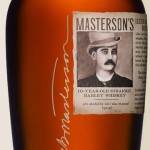
When stonemason Samuele Sebastiani first emigrated from the Tuscany region of Italy to California, he made his living mining the Sonoma hills for cobblestones to pave the streets of nearby San Francisco. During long days cutting stone, Sebastiani realized, that similar to his homeland, if not exactly paved with gold, these hills had much more potential than a source of humble cobblestones. Within nine years he had saved enough money to buy land in Sonoma County. His goal? To plant grapes and establish his own winery. Soon Sebastiani’s vineyard was supplying wine to his neighbours in Sonoma as well as restaurants in San Francisco.
In 1919, as Prohibition approached, a few California winemakers ripped up their vines and planted fruit trees. Most, however, remained in denial and simply went ahead tending their vines in preparation for their anticipated business-as-somewhat-usual 1920 harvest. This seeming foolishness quickly turned into a windfall for vineyard owners as the price of California grapes and grape juice spilled out of control in the face of unquenchable demand. A clause in the Volstead Act, the legislation which defined Prohibition, permitted home wine making. Soon, every square inch of California that would support a grapevine did so – for purely home-based purposes, of course.
Not wishing to interfere in any way with high church rituals or the prescription practices of the medical profession at large, the Volstead Act also permitted the production and sale of sacramental and medicinal wine. The difference between these products was simply the way they were labelled. Before long a huge trade sprung up with pharmacists, and particularly religious leaders, operating high-volume wine stores selling all manner of “wine” to the newly converted and the newly infirm. This perfectly legal trade created many personal fortunes, and it also set the stage for California, with its rapidly expanding vineyards, to become a major player in the world of wine after Prohibition was repealed.
While other Sonoma wineries quickly joined the highly profitable grape juice trade, Samuele Sebastiani alone, chose instead to continue making wine legally for the burgeoning sacramental and medicinal markets. It was a wise move indeed for he was able to use what turned out to be nearly fourteen years of Prohibition to further develop his winery and hone his winemaking skills.
Overall, it is estimated that Prohibition reduced alcohol consumption in the U.S. by about 30% in the period leading up to 1929. However, the stock market crash in October that year–and the ensuing Great Depression–accomplished what no law could do, as sales of alcoholic beverages, including sacramental and medicinal wines, plummeted. Sebastiani supplemented his rapidly declining trade in wine by canning peaches, pears, and nectarines for sale as food.
After Samuele passed on, the business remained in Sebastiani hands until 2008. That was when the fourth generation of the family sold the vineyards and winery to Foley Family Wines. However, winemaking remained in their veins and, in 2010, two fourth-generation Sebastianis, siblings Mia and August, picked up the family torch once more with a new wine enterprise. They called it “The Other Guys.” Remembering earlier family forays into the spirits market with brandy and grappa, The Other Guys launched a spirits division. They gave it its own decidedly non-Sebastiani name: 35 Maple Street. This new division has now begun working with several top spirits makers to create new and unique ultra-premium artisanal spirits.
The products of 35 Maple Street










